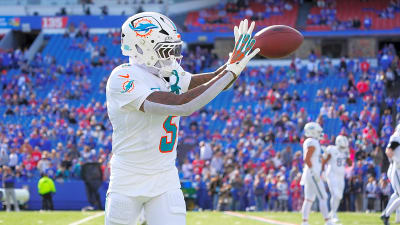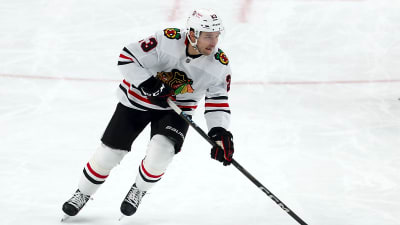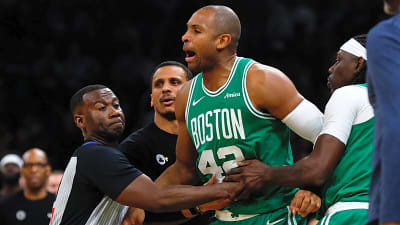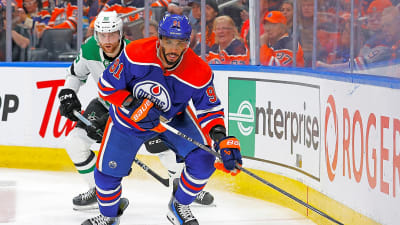
The Philadelphia Flyers entered the first round of the 2025 NHL Draft needing talent down the middle. That was no secret. So, why did they use the No. 6 pick in a top-heavy center class on a winger? This may have been the Flyers’ last chance to take as highly touted a centerman as James Hagens for a long time—don’t they recognize that?
I’m sure the Flyers understand drafting a future “1C” is a pipe dream outside a top-10 pick, and that they probably won’t have a ton of those moving forward. But I’m certain they don’t care. When presented with the opportunity to construct what might be the most lethal winger core in the NHL, they didn’t look back. Porter Martone is an arguable first-overall talent who joins Matvei Michkov and Travis Konecny—a jaw-dropping one-two-three punch.
Even if size complements his skill, the rationale behind picking Martone isn’t that he’s 6-foot-3 and 205 pounds. In my eyes, the Flyers are content with constructing a group of wingers so gifted that the need for a traditional top-line center no longer exists. If your first line is led by two superstars, it’s a superstar first line. If your second line is led by two stars, it’s a star second line.
This isn’t to say the Flyers are done down the middle, even after trading up for the 6-foot-5, 186-pound Jack Nesbitt. But it does allow them to pursue traits—ones that their wingers don’t have, perhaps—instead of pure skill in their centers. It reveals their long-term philosophy toward the position.
Martone Has Superstar Upside; Lessens Need for Center
Just based on the numbers, the upside is huge for Martone. In 2023–24, he had 71 points across 60 games in the Ontario Hockey League (OHL). With a point-per-game rate of 1.18, that beat out all draft-minus-one prospects, including 2025 second-overall pick Michael Misa. At the U18 World Championship in the spring, he became the 12th player to reach at least 17 single-tournament points in history (a pretty star-studded list, if you’re curious). This past season, Martone had 98 points in 57 OHL games, coming only nine points shy of Matthew Tkachuk’s draft-year total.
But the case for Martone is more traits-based than anything (which admittedly translates to production). He’s a relentless creator of high-danger scoring chances through his unmatched passing ability, vision, and dominance on the forecheck. Though he’s not the physical specimen his frame would imply, Martone gets to loose pucks and makes quick, smart decisions upon retrieval.
Assistant general manager Brent Flahr noted that he believes Martone can play on his off-wing (meaning, the left wing). While Michkov has already displayed superstar playmaking ability, he’s also incredibly deceptive and effective as a shooter. If he can be united with arguably the best passer in the 2025 class for the long-term future, it could mean the start of one of the NHL’s most dynamic duos.
A Martone-Michkov combination is so skilled that, in theory, all that’s needed is a complementary center. In fact, the Flyers had that setup with Michkov in his rookie campaign—he was one of the league’s most efficient 5-on-5 scorers from December to the end of the season, buoyed by his time with Sean Couturier. With a coaching staff more catered to him and the addition of a player who was ranked No. 1 on some draft boards for a decent portion of the 2024–25 season (including mine), the future heights that Michkov—and the Flyers, by extension—can reach are immense.
What to Make of the Nesbitt Pick
Personally, I didn’t have Nesbitt as a top-12 talent on my draft board. Still, I can also understand why the Flyers picked him. Yes, he’s 6-foot-5 with obvious physical and net-front upside as a result, but that’s not all. He and Cole Reschny were probably the two smartest centers on the board, a trait Flahr mentioned in his post-draft availability. The half-foot height advantage for Nesbitt surely sealed the deal, especially given the fact that both players have question marks in their skating.
My projection for Nesbitt is a middle-six center. Though he’s raw, that’s a fair outcome if he can develop the physical side of his game and improve skating-wise (likely, given he’s still growing into his giant frame). His cerebral nature can complement the Flyers’ wingers, especially someone like Owen Tippett—he has the skating but not the IQ, while Nesbitt has the IQ but not the skating.
The Nesbitt pick wasn’t high-value on paper, but a need was addressed at the end of the day. He has traits the Flyers previously lacked, which is good news for a top-heavy and deep winger core.
With Michkov and Martone as the two faces of the franchise, the Flyers no longer need a superstar center. While still a position they need to pursue—even if Trevor Zegras unlocks the first-line potential he showed in his early 20s—it’s not worth obsessing over. They’re in a position to get creative, not desperate, down the middle.
More must-reads:
- Five worst signings from the first day of NHL free agency
- Mitch Marner reveals one of his biggest regrets from time with Maple Leafs
- The 'First-overall NHL Draft picks' quiz
Breaking News
Trending News
Customize Your Newsletter
 +
+
Get the latest news and rumors, customized to your favorite sports and teams. Emailed daily. Always free!








